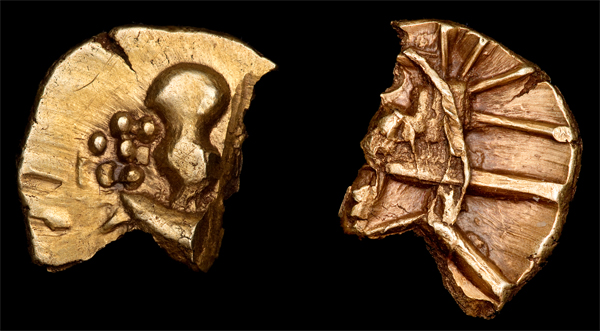
Unique ID: 51
The Duro Boat Gold quarter staters were minted by the Durotriges around 80-50 BC. They are a continuation of the boat and geometric theme started by the Morini tribe with their GB-Ca2 and GB-D quarter staters. Despite being only a fragment of a coin, I was attracted to this one because of the die break on the reverse. The curved line of the die break crosses a horizontal line, making an elongated S shape that ends with tendrils. This is exactly the same motif that appears on the Hampshire Thunderbolt quarter staters (see 2, 14, 28, 32, 37, 40, 43, 50, 117, 120, 122, and 123), and it makes me wonder if this broken reverse die was the inspiration for the new style reverses on those coins.
This is one of seven in the collection (see 7, 8, 12, 16, 42, and 112).
Note that despite being a “Scarce” coin (51 to 100 known), it is not listed in Spink’s “Coins of England and The United Kingdom: Standard Catalogue of British Coins” book. The number normally given is S.368 but the book is quite clear that is for the silver coins only.
